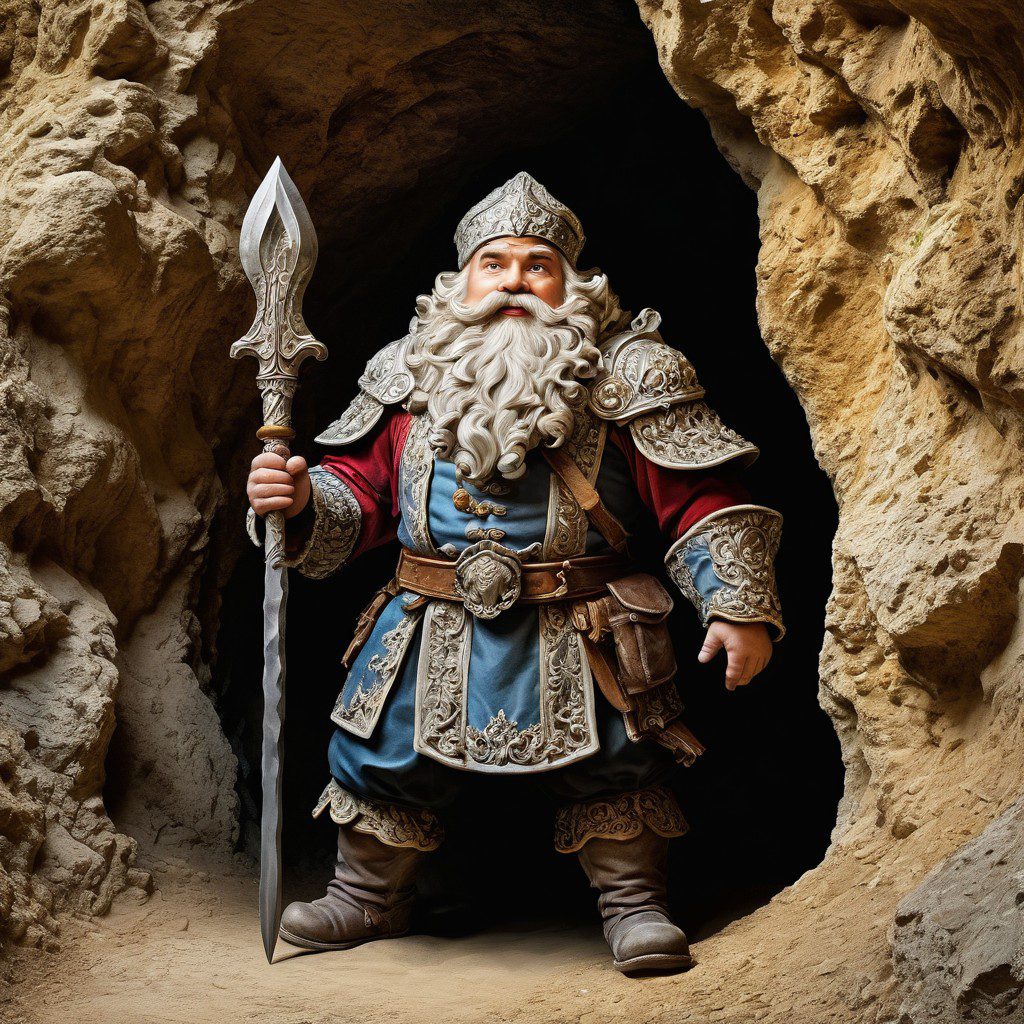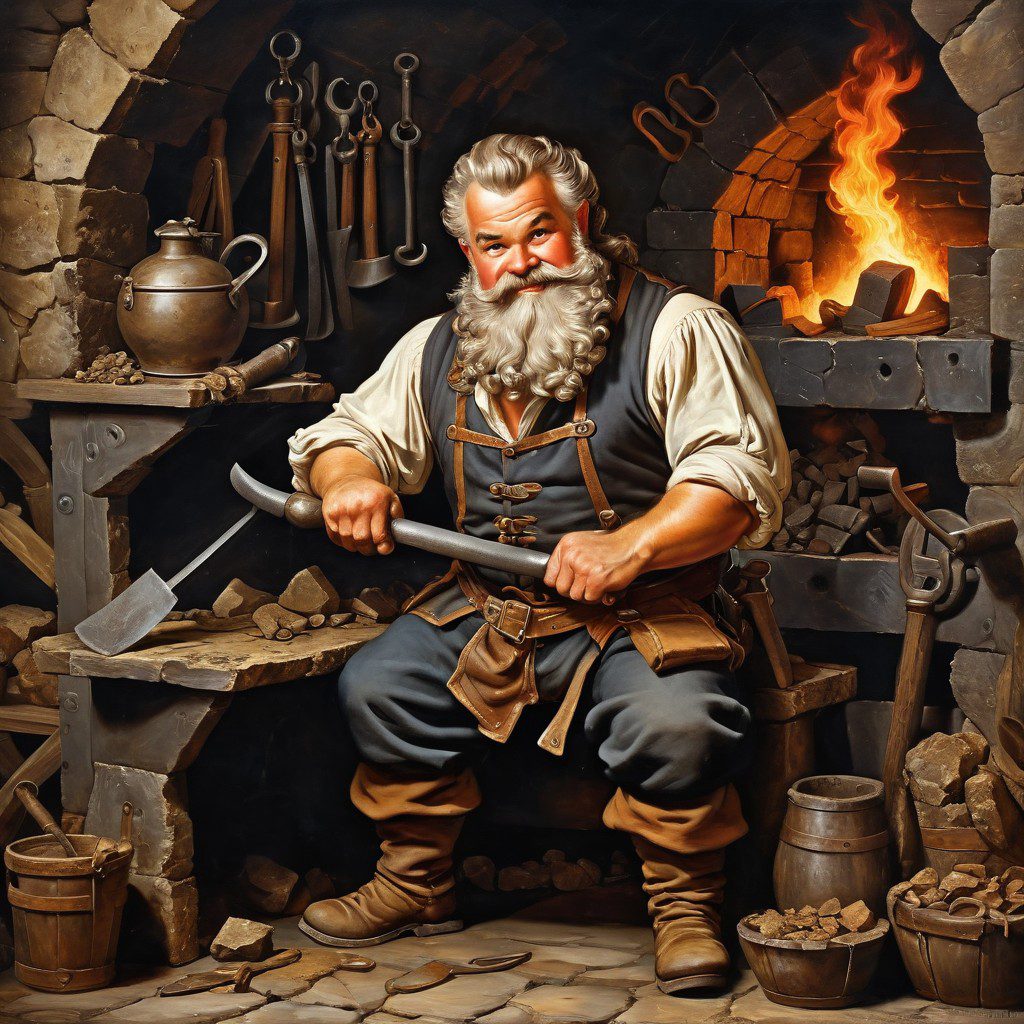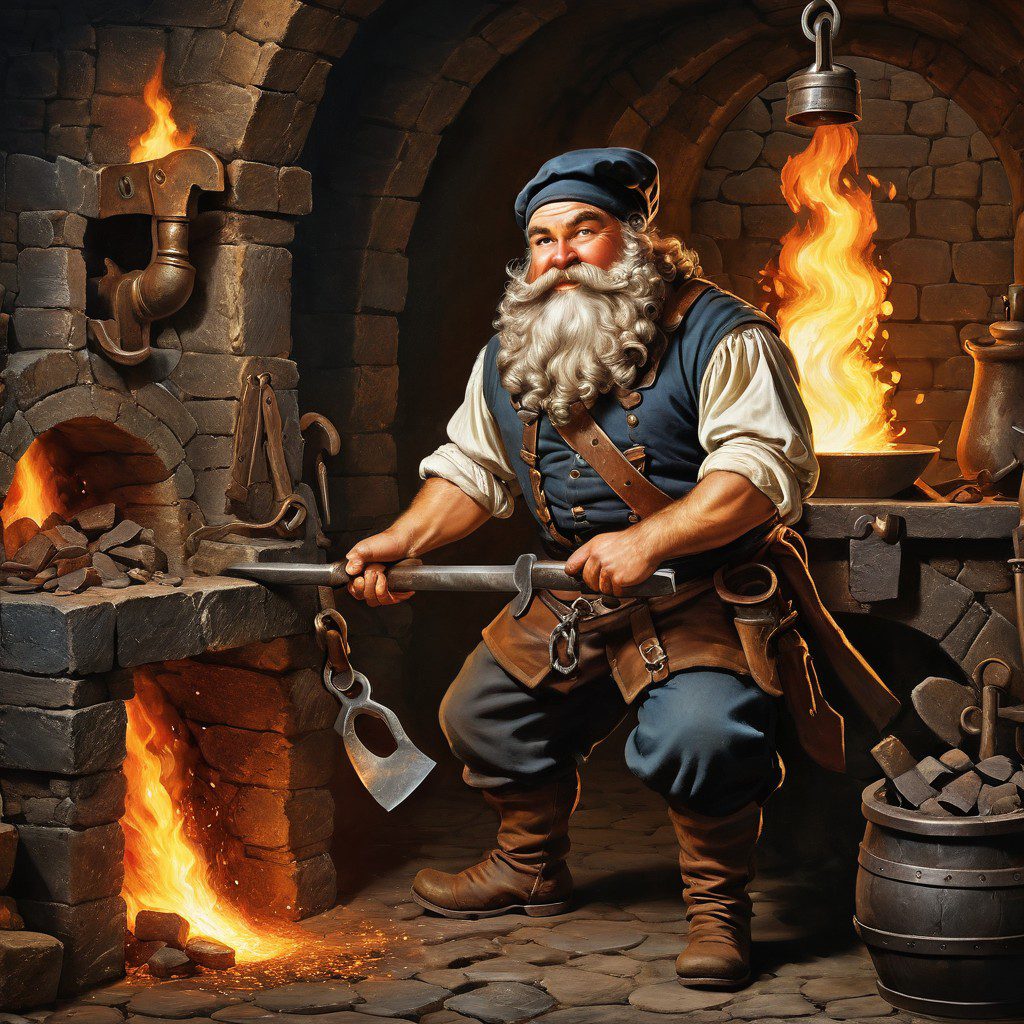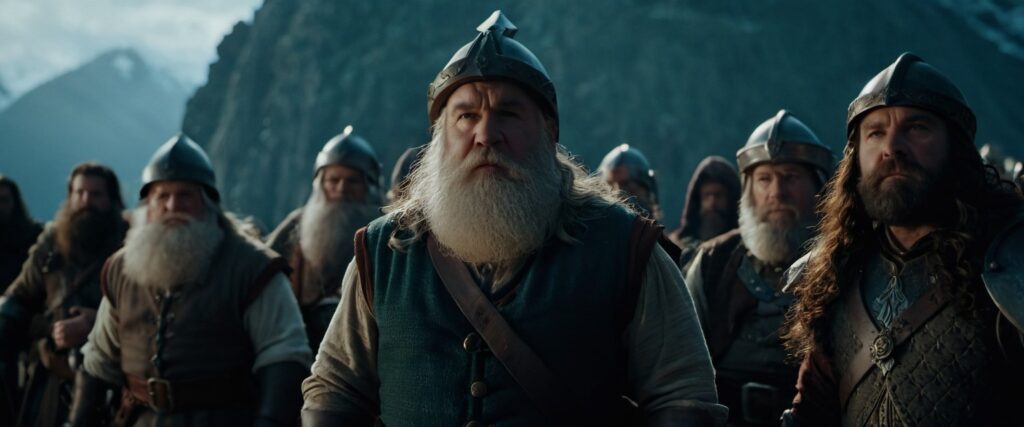Dwarves: Master Craftsmen and Guardians of the Earth in Mythology

Dwarves are legendary figures in mythologies across various cultures, best known for their craftsmanship, mining expertise, and close connection to the earth. Though the image of dwarves varies between traditions, they are generally depicted as short, stout, and highly skilled beings who live underground. Their association with metalworking, treasure, and magical artifacts has cemented their place in the mythological landscape of Norse, Germanic, and later, modern fantasy traditions.
The concept of dwarves has had a lasting impact on literature, movies, games, and pop culture, where they continue to be portrayed as rugged yet resourceful figures, balancing physical strength with brilliant ingenuity. Let’s delve into their mythological origins, their prominent appearances in literature, and their continued presence in modern media.
Origins and Cultural History of Dwarves
Dwarves, as we commonly understand them today, are primarily rooted in Norse and Germanic mythology. Known as dvergar in Old Norse, they were described as subterranean beings who lived in caves and mountains, where they worked tirelessly, mining precious metals and forging magical items.
The earliest references to dwarves come from the Prose Edda and Poetic Edda, two important texts of Norse mythology. In these stories, the dwarves were created from the flesh of the primordial giant Ymir, whose body was used to fashion the world. Some legends describe dwarves as originally maggot-like creatures that evolved into intelligent, humanoid beings, though still bound to the earth. Their magical abilities were closely linked to their craftsmanship, and they became the creators of some of the most powerful weapons and treasures in Norse myth.
In Germanic mythology, dwarves often played a similar role. They were depicted as earth spirits, known for guarding treasure hoards and living deep within the mountains. The epic Nibelungenlied (The Song of the Nibelungs), a Germanic saga, features the dwarf Alberich, a cunning treasure keeper whose story would inspire later depictions of dwarves in folklore and fantasy literature.
Dwarves in Norse Mythology
In Norse mythology, dwarves are famous for their unparalleled craftsmanship and their ability to create objects of great power. Their handiwork often serves the gods and heroes, and their creations are integral to the mythological stories.
1. Master Blacksmiths and Artificers


Dwarves are responsible for forging many of the most iconic artifacts in Norse mythology. They are known for their technical prowess and ability to imbue objects with magical properties. Among their creations are:
- Mjölnir, Thor’s powerful hammer that always returns to him.
- Gungnir, Odin’s spear, which never misses its target.
- Draupnir, a golden ring belonging to Odin, capable of multiplying itself every nine nights.
- Brisingamen, the necklace of Freyja, goddess of love and fertility.
- Skidbladnir, a magical ship for the god Freyr, which could be folded and carried in a pocket yet expanded to carry all the gods.
These objects not only showcase the dwarves’ extraordinary craftsmanship but also their deep knowledge of magic. The Norse gods rely on the skills of the dwarves to gain their most powerful tools, reflecting the dwarves’ role as indispensable allies (and sometimes adversaries) of the divine.
2. Brokkr and Sindri
Two of the most famous dwarves in Norse mythology are Brokkr and Sindri, renowned for their rivalry with Loki, the trickster god. According to legend, Loki wagered his head that the two brothers could not forge treasures more marvelous than those made by the sons of Ivaldi, other master dwarf smiths. Brokkr and Sindri accepted the challenge and forged three legendary items: Mjölnir (Thor’s hammer), Gullinbursti (a boar with golden bristles for Freyr), and Draupnir (Odin’s multiplying ring).
Despite Loki’s attempts to sabotage their work, the dwarves succeeded in creating these wonders. Although the handle of Mjölnir was shorter than intended due to Loki’s interference, the hammer became the most powerful weapon in the Norse cosmos. The story highlights the dwarves’ ingenuity and resilience, even in the face of divine trickery.
3. Dwarves as Protectors of Treasures

Dwarves were not only creators of valuable items but also guardians of great treasure hoards. This aspect of their mythology closely aligns them with the concept of wealth and greed. They are often portrayed as being protective, if not obsessive, about their wealth, which becomes a defining feature in both myth and later fantasy.
In The Saga of the Volsungs, the dwarf Andvari is the keeper of a hoard of gold, including a cursed ring, Andvaranaut. Loki steals this treasure, and in his anger, Andvari curses the ring, ensuring that it will bring doom to whoever possesses it. This myth echoes through later stories, such as Tolkien’s The Lord of the Rings, where a cursed ring also causes strife and destruction.
Characteristics of Dwarves in Mythology
Physical Appearance: Dwarves are typically depicted as short, stocky, and strong. In Norse and Germanic mythology, they are rugged and physically capable, reflecting their life underground and their labor in mines and forges. Dwarves often have long beards, and their appearances reflect their close connection to the earth—solid, grounded, and enduring.
Skills and Magic: Above all, dwarves are known for their extraordinary craftsmanship and metalworking. They are considered the finest blacksmiths in mythology, able to work with metals and gems in ways that no other beings can match. Dwarves are also deeply knowledgeable about magic, particularly when it comes to enchanting the objects they create.
Temperament: Dwarves in myth are often portrayed as secretive, proud, and sometimes gruff. They are protective of their work and their homes, living in isolation deep within mountains or underground. While they can be friendly or helpful to those who earn their trust, they are quick to anger if disrespected or tricked. Their personalities are shaped by their environment—hard, resilient, and focused on their craft.
Strengths and Weaknesses of Dwarves
Strengths:
- Masterful Craftsmanship: Dwarves are unrivaled in their ability to craft magical and powerful artifacts. Their skill in blacksmithing and metalworking is unmatched, and their creations are often key to the success of gods and heroes.
- Physical Durability: Dwarves are strong, resilient, and capable of enduring harsh conditions. Their life underground makes them well-suited to mining, metalworking, and other labor-intensive tasks.
- Magical Knowledge: Beyond their physical strength and technical skills, dwarves possess a deep understanding of magic, which they use to create enchanted objects or protect their treasures.
- Loyalty and Honor: Though often portrayed as gruff or reclusive, dwarves are deeply loyal to their kin and those who earn their trust. They value honor, hard work, and the protection of their homelands.
Weaknesses:
- Greed and Obsession with Wealth: Dwarves are often depicted as overly protective of their treasure hoards, and this greed can sometimes lead to their downfall. Their desire for wealth and power can make them vulnerable to curses, betrayal, or conflict with others.
- Isolationist Tendencies: Dwarves are often reclusive and wary of outsiders. This isolation can make them mistrustful, limiting their alliances with other races or gods, and can lead to missed opportunities for cooperation.
- Stubbornness and Pride: Dwarves are proud of their craftsmanship and their heritage, which can make them stubborn or unwilling to compromise. Their pride can be a source of strength but also a potential flaw when dealing with others.
Dwarves in Modern Fantasy and Popular Culture
Dwarves have left an indelible mark on modern fantasy literature, films, and video games. They are often portrayed as stocky, bearded warriors or blacksmiths, continuing the traditions set by their mythological counterparts.
- J.R.R. Tolkien’s Middle-earth: Perhaps the most influential modern depiction of dwarves comes from J.R.R. Tolkien’s The Hobbit and The Lord of the Rings. Characters like Thorin Oakenshield and Gimli epitomize the traits of traditional dwarves—courageous warriors, masterful blacksmiths, and proud guardians of their treasure hoards. Tolkien’s dwarves are deeply inspired by Norse and Germanic mythology, particularly in their isolationist nature and their love for gold.
- Dungeons & Dragons: In Dungeons & Dragons (D&D), dwarves are one of the core playable races, known for their endurance, strength, and craftsmanship. The D&D depiction of dwarves as gruff, hearty warriors with a deep connection to the earth and treasure closely mirrors their mythological origins.
- Video Games: Dwarves are a staple in video games, often serving as strong, resilient fighters or masterful engineers. Games like World of Warcraft, Skyrim, and Dragon Age feature dwarves prominently, usually maintaining their core traits of craftsmanship, physical strength, and loyalty.
- Movies and TV: Beyond Tolkien’s adaptations, dwarves appear in other fantasy franchises like The Chronicles of Narnia, The Witcher, and Harry Potter. They are often depicted as strong, stoic figures who value hard work, honor, and the protection of their realms.
The Legacy of Dwarves: Mastery, Strength, and Resilience
Dwarves have transc
ended their mythological roots to become iconic figures in modern storytelling. Whether as craftsmen, warriors, or guardians of treasure, they embody the virtues of hard work, loyalty, and resilience. Their rich legacy in mythology—from Norse sagas to Germanic epics—has made them a lasting symbol of the strength that comes from the earth and the power of those who shape it.
As long as there are tales of treasure, magic, and heroism, the dwarves will continue to play a central role in both ancient myth and modern fantasy. Their unyielding spirit, mastery of craft, and steadfastness in the face of adversity make them timeless symbols of endurance and ingenuity.
